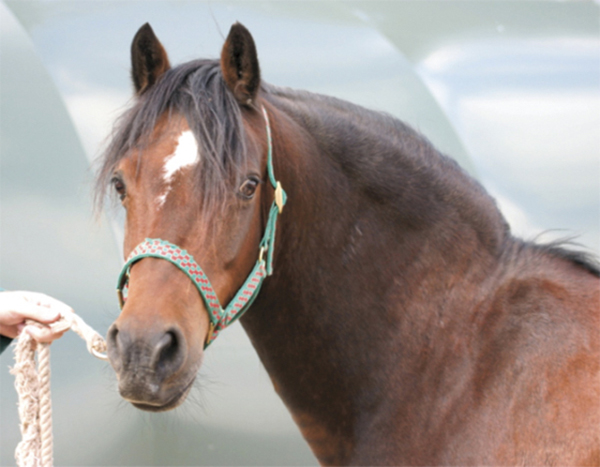Insulin Resistance or Insulin Dysregulation?

By: Eleanor M. Kellon, VMD
Insulin dysregulation (ID) is a term coined in a 2014 publication to describe horses with abnormal levels of insulin. Elevated insulin used to be considered to mean a horse is insulin resistant, and in many cases it still does, but there is emerging information there can be other mechanisms behind an elevated insulin.
Insulin resistance (IR) means the insulin-responsive cells — muscle, fat, liver — do not take up glucose normally in response to insulin. As a result, the pancreas puts out higher levels of insulin until the glucose blood levels normalize. This is one explanation for why blood insulin levels would be higher than normal.
The level of insulin in a horse’s blood is a function of both how much is being secreted by the pancreas, and the rate with which the liver, kidney and muscle clear it from the blood. There is some evidence to suggest there may be decreased clearance of insulin in horses with high insulin levels. However, abnormal clearance as the primary cause of high insulin blood levels has never been proven. It is known in people that reduced insulin clearance is part of the insulin resistance picture; it’s likely a way the body helps to keep higher levels of insulin circulating when needed.
Intestinal hormones called incretins can also signal the pancreas to release insulin. When the horse eats, incretins are released into the blood by the intestinal tract. Two of these incretins, GLP-1 and GIP, cause release of insulin from the pancreas. It has been found that some ponies that test negative for insulin resistance with intravenous testing, will have positive tests for hyperinsulinemia (high blood insulin) after being given oral grain or dextrose. The abnormally high insulins after feeding have been linked to higher levels of active GLP-1 incretin. On the other hand, a similar study in full-size horses with Equine Metabolic Syndrome (EMS), did not find any significant connection between higher active GLP-1 and high insulins.
Because high blood insulin after eating or oral dextrose dosing does not necessarily mean the animal will test positive for insulin resistance by intravenous testing, and slow clearance of insulin from the blood could cause high insulin, the term insulin dysregulation was suggested to describe all horses with hyperinsulinemia, regardless of the cause(s).
Personally, I don’t think this is a good term. Dysregulation implies there is something abnormal going on. A 2015 study by deLaat, et al., found that the non-IR ponies with high insulins on oral testing were also absorbing increased amounts of glucose. In that scenario, the higher levels of GLP-1 and insulin could be considered an appropriate response to the higher glucose, not dysregulation. The dysregulation in that case involves glucose absorption, not the reaction to it.
Similarly, if reduced insulin clearance is proven in horses with high blood insulins, it is not necessarily a dysregulation. There may simply be a limit to how fast insulin clearance can occur. Alternatively, it may be entirely normal for insulin clearance to slow down when there is a situation of high glucose.
To put it another way, if insulin levels were truly being abnormally regulated with no connection to blood sugar, it would show up in the blood glucose. Too much insulin would cause low blood sugar, and too little would result in high levels. We don’t see that.
It’s important to understand that having high insulin may not necessarily always mean there is insulin resistance, if only so that you do not become confused by seeing the term insulin dysregulation. However, the change in terminology from insulin resistance to insulin dysregulation looks premature.
In any case, the bottom line for the horse is the same. High insulin is a risk factor for laminitis and the best way to combat it is with an appropriate diet and plenty of exercise — regardless of what is causing it.
To learn more, join the ECIR Group, August 13-15, for the 2021 NO Laminitis! Conference, via Zoom, which continues the mission to serve the scientific community, practicing clinicians, and owners by focusing on investigations most likely to quickly, immediately, and significantly benefit the welfare of the horse. www.nolaminitis.org
About ECIR Group Inc.
Started in 1999, the ECIR Group is the largest field-trial database for PPID and EMS in the world and provides the latest research, diagnosis, and treatment information, in addition to dietary recommendations for horses with these conditions. Even universities do not and cannot compile and follow long term as many in-depth case histories of PPID/EMS horses as the ECIR Group.
In 2013 the Equine Cushing’s and Insulin Resistance Group Inc., an Arizona nonprofit corporation, was approved as a 501(c)3 public charity. Tax deductible contributions and grants support ongoing research, education, and awareness of Equine Cushing’s Disease/PPID and EMS.
THE MISSION of the ECIR Group Inc. is to improve the welfare of equines with metabolic disorders via a unique interface between basic research and real-life clinical experience. Prevention of laminitis is the ultimate goal. The ECIR Group serves the scientific community, practicing clinicians, and owners by focusing on investigations most likely to quickly, immediately, and significantly benefit the welfare of the horse.










